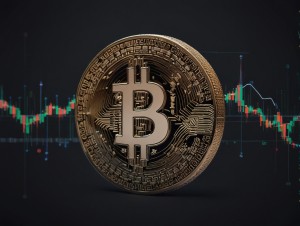Bitcoin’s price volatility is public knowledge. Its ability in switching an investor’s status from a millionaire to a pauper is notoriously common.
And while Bitcoin is engrossed in creating ground-breaking milestones and achieving them too, a finance professor presumes that artificial intelligence could very well be the key to Bitcoin’s uncertainties.
Bitcoin’s sensational performance so far
Yes, Bitcoin has shown exemplary performance in the last few weeks. From a dramatic bullish run to fourteen thousand dollars ($14,000) to a sudden plunge to nine thousand nine hundred dollars ($9900) mark. All this, together with daring price predictions for one hundred thousand dollars ($100,000), the crypto king appears to have become the blue-eyed boy for investors, analysts, and businesses.
This trend, however, also goes to demonstrate the degree of unpredictability one deals with. Traditional investors have continued to ponder over the price movements for years.
AI can provide the bigger picture
However, an academic from the University of Guelph, Professor Nikola Gradojevic, claims that the solution will ultimately come from artificial intelligence. Artificial neural network (ANN), a model designed by the inventive finance professor and his colleagues, aims to predict the Bitcoin’s price movements almost accurately.
Slated to be launched sometime in late 2019, the model collects Bitcoin price data extensively from 2011 till 2018 with three prediction points: 200-day buy-sell signals, 50-day buy-sell signals, and returns. Equipped with the stock market fluctuation feature, the model is expected to provide reliable price predictions.
Bitcoin’s price fluctuations are driven by human emotions. The ANN model predicts and analyses human behavioral patterns to precisely estimate the bullish and bearish emotions on Bitcoin. According to the research team, the model can reduce prediction error by at least ten percent (10%). Nevertheless, the team will be required to constantly feed data to make it more credible.
Near-accurate price forecasting
Gradojevic exclaims that during the test runs, the model was able to estimate the entire price run from 2011 to 2018 with around sixty-three percent (63%) accuracy.
The findings may show promising results, however, Bitcoin’s unpredictability is deep-rooted and one can never really guarantee fool-proof results.
Strangely enough, the professor shows no interest in reaping the benefits of near-accurate price forecasting. With this experiment, he wishes to test the limits for AI’s predictability-based models and map out fundamentals for Bitcoin’s price trends.
However, can machine learning truly revolutionize the way we trade, sell and buy Bitcoins? It may be unthinkable at this stage but certainly within the realms of possibility.




